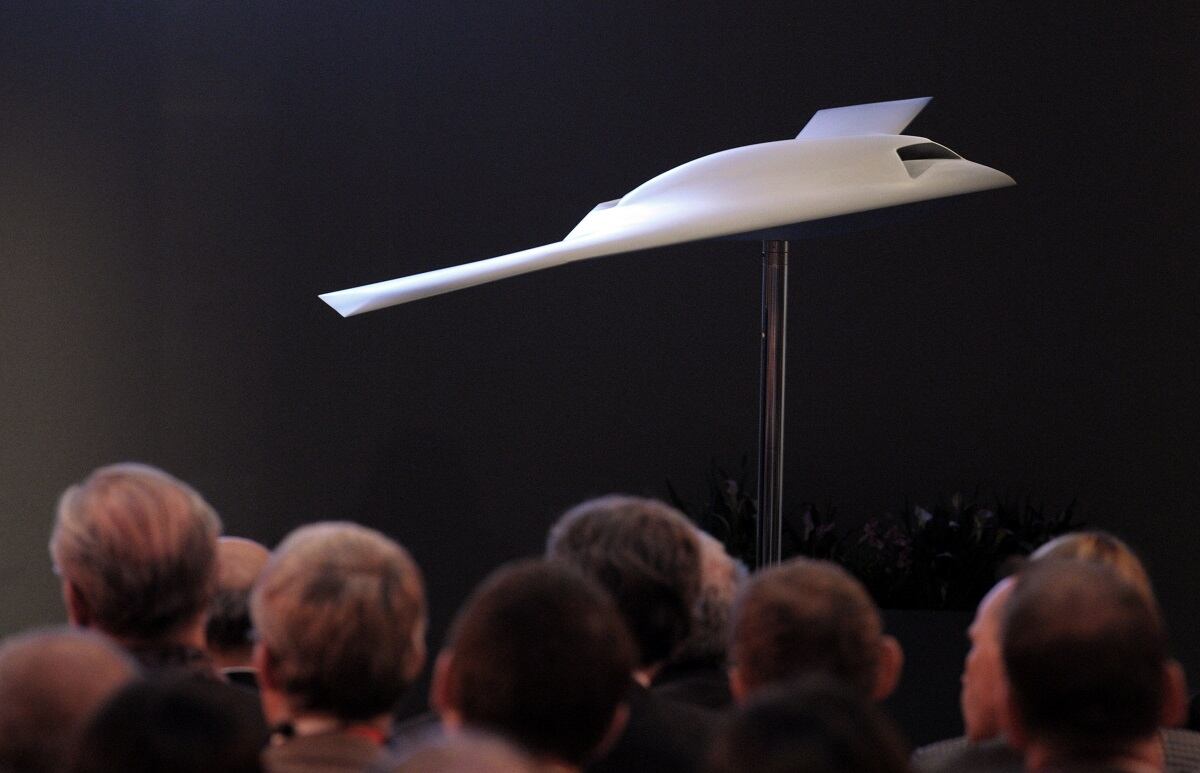BERLIN — Germany may be committed to a project with France aimed at building a new aircraft for Europe by 2040, but don’t expect anything drastic or sudden to happen out of Berlin.
That was the principal message delivered here to defense industry leaders by German Air Force Brig. Gen. Gerald Funke, who oversees Germany’s planning for the Future Combat Air System, or FCAS.
“Don’t trust anyone who says they can make predictions about the characteristics of an air system in 2040,” Funke said at the International Fighter industry conference on Wednesday. That attitude means Germany is expected to wait as long as possible before closing the design phase of the envisioned weapon and moving toward production.
“We need [a] sensible starting point that’s worth spending money on,” Funke told Defense News on the sidelines of the conference. “The time pressure is not as acute as industry presents it.”
Funke expects money to start flowing toward the project in 2019, when initial concept studies begin to refine plans for the weapon. He said it remains to be seen whether the initial investment will exceed €25 million (U.S. $28 million), the cutoff for parliamentary approval in Germany.
RELATED

Exactly what the new combat jet will look like is still up in the air. But a set of key “design drivers,” as Funke called them, has emerged and are meant to shape the types of questions analysts will pose as they forge a collection of actual capabilities.
Autonomy will be a key feature for the jet and its accompanying drones, though never to a degree that humans are no longer involved in striking targets. Officials want it to be highly interoperable with allied aircraft and weapons, even older ones, and able to easily pass data between them. Costs, both for buying the system and operating it, also will be key considerations, especially in Germany, Funke said.
The catchphrases “modularity” and “software” also are on the forefront of requirements developers. That means the Air Force eventually wants to have a base aircraft configuration that can be programmed on the fly for specific missions, like strike, reconnaissance or inflicting some sort of cyber damage to future foes.
For Germany, a high degree of “tailorability” is a must-have feature, Funke said.
Airbus, meanwhile, has some ideas about the physical appearance of the system and its associated components. According to the company, a typical FCAS fleet includes so-called command aircraft of varying configurations, surrounded by autonomous “remote carrier” drones that work in swarms to do anything from attack to surveillance. Additional, smaller unmanned flying sensors provide yet another layer of eyes and ears for the group, with support aircraft for aerial refueling or transport and even space assets counted as part of the FCAS family.
The most important component is something called the “combat cloud ecosystem,” a kind of brain connecting all FCAS nodes through secure data arteries.
Airbus project lead Bruno Fichefeux argued time is of the essence in developing the program, even though the envisioned fielding time is still decades away.
“The technology needs time to mature,” he said. “If we mean the program seriously,” France and Germany should soon begin spending money on it.
The Spanish military, meanwhile, is keeping an eye on the FCAS program and will decide at a later point whether to join.
While Germany appears eager to pave a path for Madrid’s participation, Spain is still keeping its options open, a Spanish defense official said.
Sebastian Sprenger is associate editor for Europe at Defense News, reporting on the state of the defense market in the region, and on U.S.-Europe cooperation and multi-national investments in defense and global security. Previously he served as managing editor for Defense News. He is based in Cologne, Germany.








